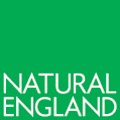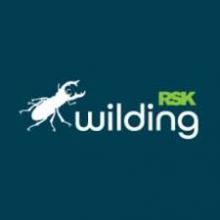The UK Environment Act (2021) states that all developments requiring planning permission must demonstrate a 10% net gain in biodiversity compared to the pre-development baseline. In some instances developers may choose to go beyond 10% BNG to demonstrate their commitment to nature recovery and/or to attract wider support for their proposals. The BNG value of a site is calculated using the Department for Environment, Farming and Rural Affairs (Defra) metric which converts information on the area and condition of various habitats into a numerical value. The difference between the value of the land before any development/land management intervention and afterwards indicates whether a net gain in biodiversity has been achieved. Where the required uplift in biodiversity value cannot be realised on a particular site then it may be necessary to do so off-site, thus creating an opportunity for others to sell biodiversity credits in return for delivering the required habitat on their land.

The concept of Biodiversity Net Gain (BNG) is an important component of the UK Government's ambitions to reverse biodiversity loss. It provides a framework for ensuring that development and land management activities leave habitats in a measurably better state than beforehand.
Recommended Content
Content below is from across the PEP community and is not necessarily endorsed by Stewards or by PEP
Connected Content
There are around 3.2M ha of woodland in the UK. This is set to increase substantially over the coming years due to a range of policy, social, environmental and commercial drivers, including Net Zero, Biodiversity Net Gain, ELMs, Local nature recovery plans and carbon trading.
Are environmental benefits (carbon, biodiversity...) best served by sharing agricultural land with nature, or by maximising yield in some areas to spare tracts of land exclusively for nature in other areas?
Rewilding is an approach to restoring biodiversity and ecosystem health by working towards returning habitats back to their natural state. Rewilding is commonly misrepresented as the reintroduction of large and glamorous wild animals and the removal of people and human activity from the landscape, but this is very rarely the case.
Funding available for research and knowledge exchange in the UK comes from a mix of public, industry and charitable sources
Natural capital refers to the stock of natural resources and ecosystems that provide essential benefits and services to agriculture. In the context of farming, natural capital encompasses the fertile soil, clean water, biodiversity, pollinators, and healthy ecosystems that play a crucial role in sustaining crop and livestock production. These natural assets are the foundation of agricultural sustainability, productivity, and resilience.
RSK is a global leader in the delivery of sustainable solutions. Our family of over 150 environmental, engineering and technical services businesses works together to provide practical solutions to some of the greatest challenges societies have ever faced.
Bringing the real food and farming movement together. Every January the Oxford Real Farming Conference connects people in the UK and around the globe who want to transform our food and farming system. The ORFC23 is taking place between 4th-6th January 2023 - see our event page for more details in the 'recommended content' section below.
Policy plays a critical role in shaping the agriculture industry in the UK and Europe. Government policies can have a major impact on the way that farmers operate, the crops they grow, and the prices they receive for their products. Policy has a major effect on how land is managed and environmental outcomes.
Although the term management implies direct manipulation, the practice of wildlife conservation and management includes efforts aimed at preserving or restoring rare species and their habitats and indirect manipulation of wildlife populations through modification of habitat or resources. From: Encyclopedia of Ecology, 2008
If you are a farmer seeking extra revenue for good environmental work on your land, we could help you to access funds.
Biodiversity encompasses all the variety of life on Earth from genes to species, populations, communities and ecosystems. In ecological and environmental sectors, we mostly refer to the biodiversity of plant and animal communities within particular habitats.
This Topic doesn't yet have a Stewarded summary, but connected groups, content and organisations show below. Click the 'Ask to Join' button if you would like to be a Steward for this Topic and provide a summary of current knowledge and recommend useful resources, organisations, networks and projects.
As custodians of the landscape all farmers have responsibility to the wildlife and nature on their farms. There are many networks, organisations, advisors and initiatives seeking to help farmers enhance wildlife and biodiversity. Increasingly this is being supported by Defra through ELMS and Local Nature Recovery schemes
Land use refers to the way that land is used and managed for various purposes, such as agriculture, housing, industry, and recreation.
Tilhill offers farmers a professional one-stop forestry service for woodland creation, management, selling woodland generated carbon units, and timber harvesting.
The founder and chairman of Environment Bank, Professor David Hill, recently sat down with New Scientist to discuss the future of farming and food. The interview explores how changing approaches to agriculture are essential in preserving the ‘natural capital’ of global biodiversity and prosperity for farmers.





